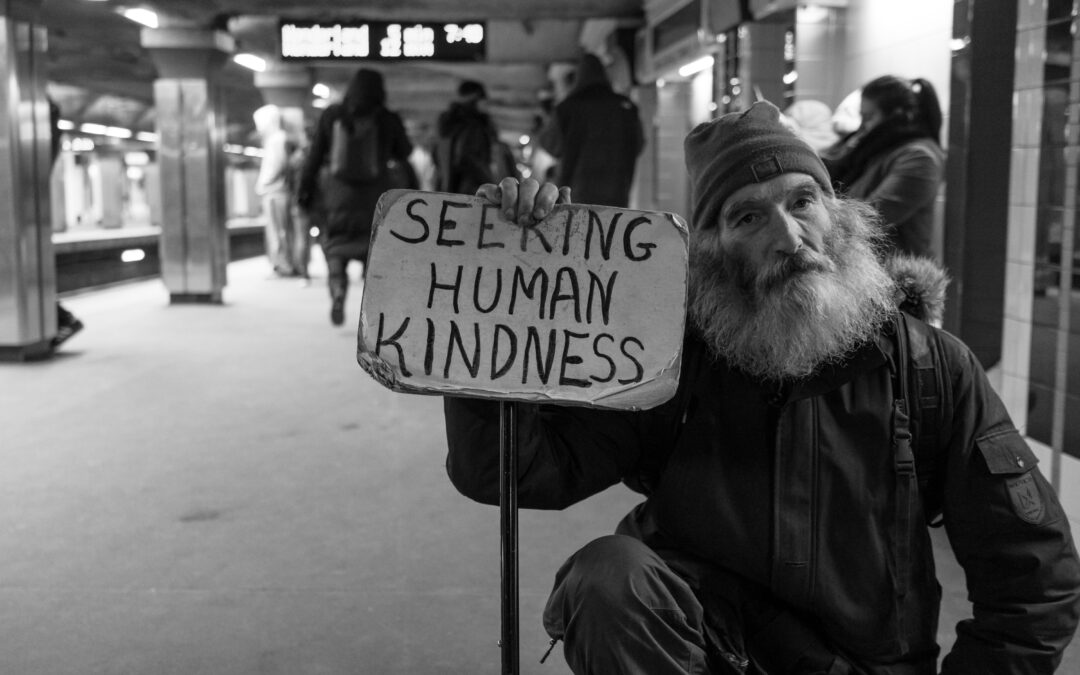Compassion – the sensitivity to others’ distress with a desire to alleviate it. Seems pretty simple. We’re all different, so we have varying amounts. Some are more attuned to other’s experiences and feelings, others less so. Add to that that we balance our sensitivities to others with our own personal beliefs, and it’s easy to see why we all approach this differently. But what about compassion in public conversations? Whatever is happening on the individual level, it feels like we are lacking in public compassion.
Ann Markusen talks about how compassion in our public discourse seems to be deteriorating. And, while I believe her ending – that most people, on an individual level, are doing the best they can – my concern is institutional compassion. As institutions are made up of individuals, who all have varying levels of compassion, shouldn’t organizations – companies, government entities, media, etc. – be compassionate as a default? But I don’t think they are; I think most of our institutions are numb to real human experience.
An example most close to my heart: Ignoring traumatized individuals seems to be the norm. Definitely after violence, in news reports and a lot of social media, the compassion that is available is reserved for two main groups: people with physical injuries and families of those killed. People deserving of compassion, indeed. Yet this is the tip of the iceberg of those impacted by violent events. Witnesses, first responders, family of survivors, those nearby or living in the neighborhood where it happened, all can suffer. All may need some level of support in the aftermath. Yet public conversations after violence, while many are passionate and well-meaning, are narrowly focused.
I know this, because my experience was ignored after mass violence. To this day, the institutions that were most marginalizing to people like me are still doing it. Still separating out our experience as not as valid, not as real, showing us that the experiences of witnesses and those with psychological wounds don’t count in public conversation and memories of the event. While many others come at this lack of institutional compassion from sources other than violence (such as those mired in poverty or LGBTQ individuals whose rights are being taken away), it’s the same story.
Organizations choose which members are worthy of compassion. The media decides which people in the stories they share are most entitled to compassion. Municipalities decide which citizens, and which of their experiences, deserve compassion. They choose who gets public validation, who is worthy of financial support, which resources to provide for those impacted in the aftermath of an event, if there should be a public memorial and who is included in it, and whether or not to invest in the prevention of another episode of whatever happened.
It’s true that no organization or government has unlimited resources; tough choices must be made. Yet this systematic lack of compassion leads to real human suffering – our institutions are telling people that their pain doesn’t count.
The more I think about this, the more I wonder: Is it possible for institutions to truly be compassionate? Even given the inherent in-person compassion of a significant number of those who work for an organization. Is it possible to truly recognize the distress of all those impacted (by violence in my case) without a political or financial calculation (conscious or not)? Yes, there must be a line – a city government, for example, does not have the resources to help every single citizen who needs it. But where does that line get drawn? It seems to me that line is often drawn to include the least amount of people possible, to minimize the messy human part of the equation.
Instead, what if we lead with compassion? Apply a human calculation first – to recognize everyone who may be impacted by an event, a policy, or a decision. Validate their experience. Understand how this may impact others. Do no additional harm. And then figure out the rest.
Photo by Matt Collamer on Unsplash

